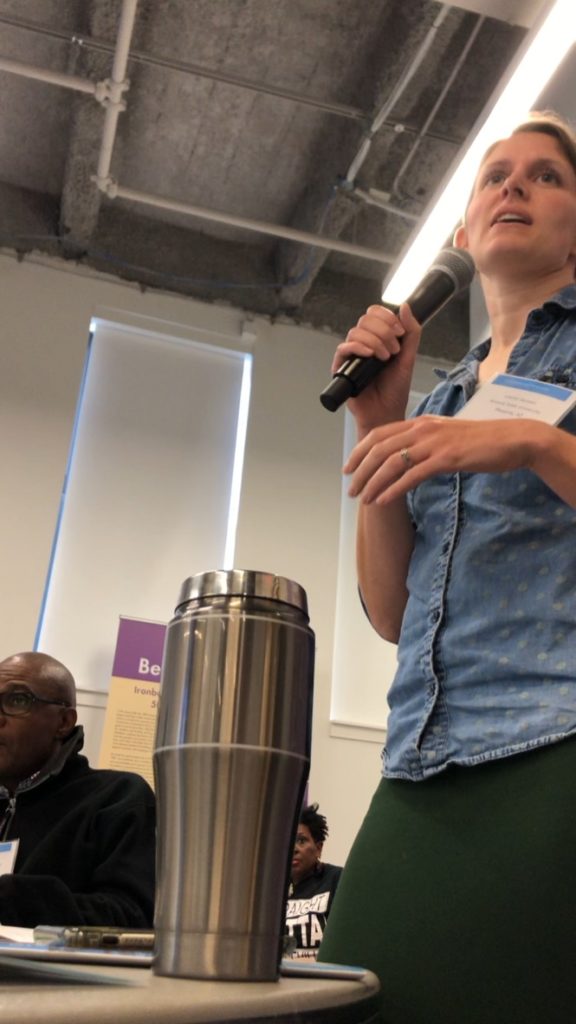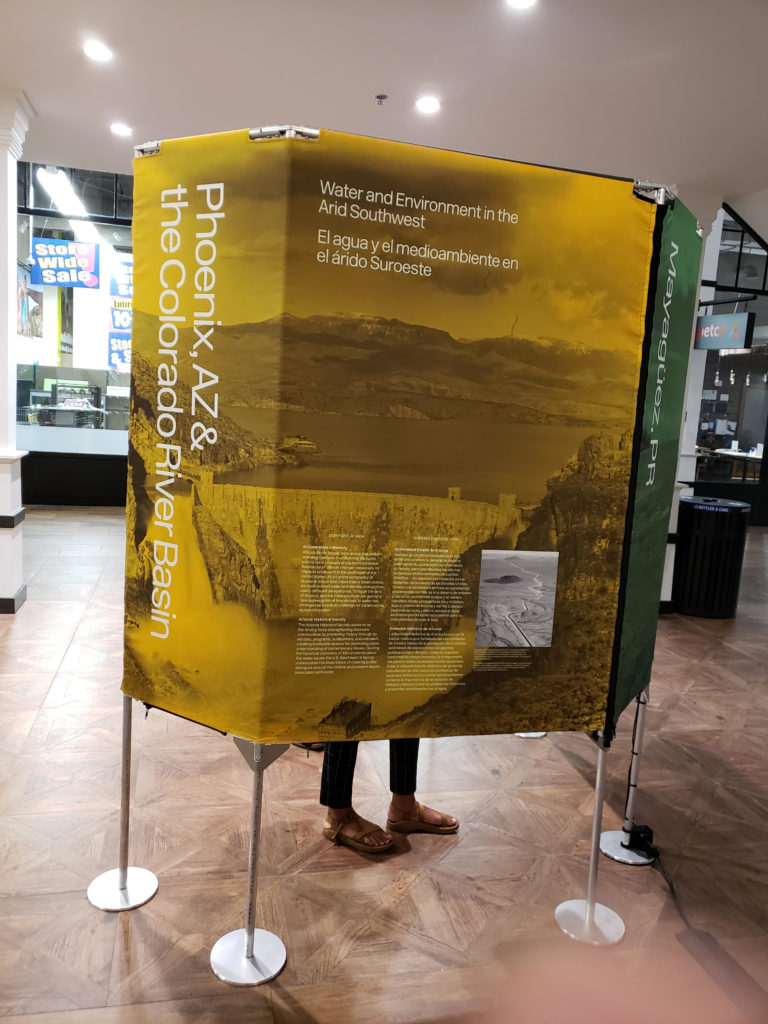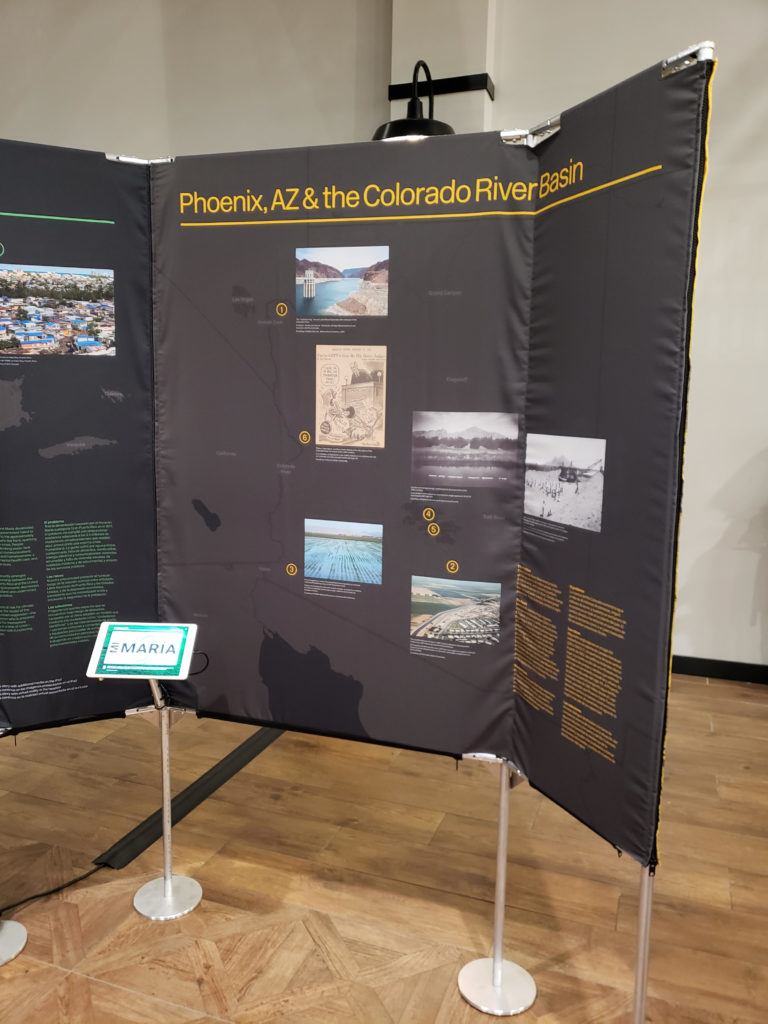The Climates of Inequality project is an international traveling exhibit that launched in New Jersey in October 2019; it will travel to Phoenix in 2022. The exhibition is a collaboration between students and faculty at more than 20 universities worldwide, with each contributing panels to the project. The exhibit explores how environmental issues affect diverse communities, the historical roots of these issues, and strategies for achieving environmental
justice. Students, faculty and educators created the exhibit.
Students taking the Public History Methodology course in Spring 2019 developed ASU’s contribution to the effort. History MA student, Lauryl Jensen explored the history of the Central Arizona Project. Planned in the decade followingWorld War II, CAP was not completed until the 1990s. It transports water from the Colorado River to Central Arizona and south to Tucson. The project has both fueled growth in Phoenix and has exacerbated water issues in the broader Colorado River Watershed–all of which will grow more pronounced as global warming reshapes the American West. Working on the project allowed her to communicate with other online students from other areas of the country that provided different viewpoints on climate inequality and the impact that it has in their areas. While exploring the history of CAPJensen learned more about water rights in different areas of the country and how they affect people
differently based on their socioeconomic status.
Lauryl Jensen hopes that the traveling exhibit reaches as many people as possible. The goal of the project was to attempt to increase education of the issue of climate inequality and the water issues that are focused within central Arizona. Lauryl understood that this message could mean different things to different people depending on their geographical location, experiences, social status and other factors. She wants people to understand the history of the
decisions that were originally made regarding the water canal system within the Colorado river basin that helps distribute water across the southwest United States and if those decisions should be changed as the area continues to change and grow.
Lauryl Jensen shared that working on this project was a great experience for her, especially as an online student from Georgia. It provided her with an opportunity to become involved hands on with the university. She recognizes ASU’s ability to include online students in their programs and allow them to have the ability to still be a part of campus culture, have these experiences and create something that has meaning to the community.






